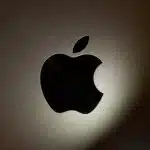Despite early reports suggesting an increase in orders for the iPhone 16 following the WWDC event, recent statements from two of Apple’s key suppliers, TSMC and Largan Precision, indicate otherwise. This development casts doubt on the anticipated surge in demand for Apple’s next-generation smartphone.
TSMC and Largan Precision’s Insights
TSMC, one of the world’s largest semiconductor manufacturers, stated that they have not observed a significant rise in unit growth. Largan Precision, a leading supplier of camera lens modules, reported that orders for high-end models this year are comparable to last year.

Ming-Chi Kuo’s Analysis
Ming-Chi Kuo, a well-known analyst, noted that some suppliers might see an increase in iPhone 16 orders. However, the overall volume from assembly plants remains largely unchanged. Kuo estimates the orders to be around 87 million units, slightly lower than the 91 million units ordered for the iPhone 15 during the same period last year.
Consistent Trends Across Suppliers
This trend across TSMC, Largan Precision, and assembly manufacturers suggests a consistent pattern. This makes it a reliable indicator. The increase in orders for some suppliers might be due to specific industry or component-related reasons, rather than a general surge in demand.
Impact of Apple Intelligence
One of the main drivers behind the expected increase in iPhone 16 orders was the introduction of Apple Intelligence. This new feature was believed to boost demand for the iPhone 16. However, Apple Intelligence is currently available only in a beta version for U.S. users and supports only the English language. Kuo questions whether this feature alone can drive significant demand for new iPhones. Especially when it is still in the testing phase. He suggests that expecting consumers to purchase the new iPhone 16 based on a beta version of Apple Intelligence might be overly optimistic.
Conclusion
In conclusion, while early reports post-WWDC indicated a potential rise in iPhone 16 orders, recent statements from TSMC and Largan Precision suggest that the overall demand might not see a significant increase. This cautious outlook from key suppliers highlights the uncertainties in the tech market. It also shows the challenges in predicting consumer behavior based on emerging technologies.
Source: Ming-Chi Kuo












